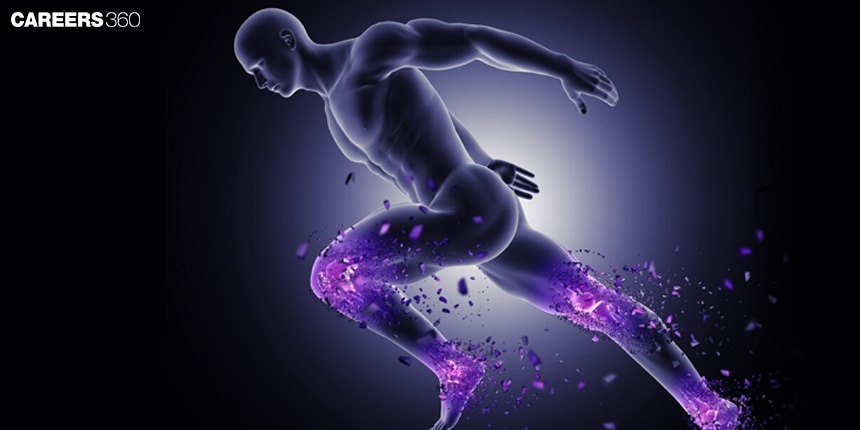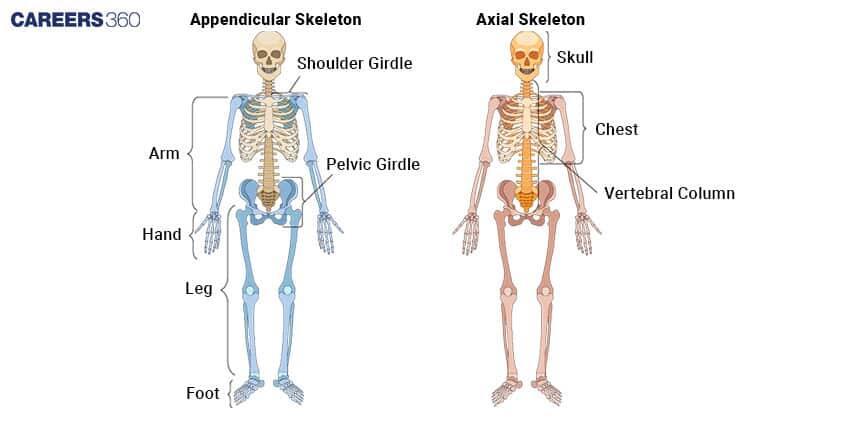Joints: Definition, Anatomy, Movement, Types, Function
A joint, also referred to as an articulation, is the connection between two or more bones in the body which allows movement and provides stability. In anatomy, a definition of a joint can include its role in facilitating motion and supporting the skeletal system. To define a joint, it is important to understand its structural and functional aspects. Joints are classified based on structure and function whether they are fibrous, cartilaginous, or synovial and whether they are immovable, slightly movable, or freely movable. Asking the question "What is a joint?" includes its vital role in providing mobility as well as maintaining the posture of the body. This is the topic of the Chapter Locomotion and Movement from Biology.
Don't Miss: Most scoring concepts for NEET | NEET papers with solutions
NEET 2025: Syllabus | PYQs | Crack NEET in 2 months - Study Plan
NEET Important PYQ & Solutions: Physics | Chemistry | Biology | NEET PYQ's (2015-24)
- What are Joints?
- Classification of Joints
- Structural Classification
- Functional Classification of Joints
- Advantages of Knowing Joints

What are Joints?
Joints are primary parts of the human body that enable any kind of movement and ensure stability. They connect the bones, making every living creature capable of moving. From gestures to challenging athletic moves, the types and functions of joints are highly relevant and must be learned while understanding human anatomy and physiology.
Also Read:
Classification of Joints
The classification of joints is given below in a detailed approach:
Structural Classification
Joints are structurally classified based on the material that holds the bones together.
Fibrous Joints
These joints are immovable and possess fibrous connective tissue that tightly connects bones. They are located at places in the body where more stability and support are needed, such as in the skull.
Cartilaginous Joints
Cartilaginous joints are joined by cartilage and allow limited movement. They include synchondroses, which are temporary and thus are a type of epiphyseal growth plate, and symphyses, which are permanent and connect bones in the pelvic girdle, such as the pubic symphysis.
Synovial Joints
Synovial joints have a relatively large range of motion compared to other forms of joints. Synovial joints, by their very nature, contain an enclosed cavity filled with synovial fluid. In such joints, one finds a wide degree of movement about the limbs and spine.
Functional Classification of Joints
Functional classification is focused on the degree and type of movements that are permitted. These include
Ball and Socket Joints
The Ball and Socket joints have the greatest range of motion, including rotation movements, which involve remodelling. Examples include the hip and shoulder joints.
Pivot Joints
Pivot joints are those that permit rotational motion around a central axis. An example is the joint between the atlas and axis vertebrae in the neck.
Hinge Joints
Hinge joints move in one plane, similar to the action of a door hinge. Examples are the elbow and knee joints.
Saddle Joints
Saddle joints are very flexible, for they allow movement in two planes. The wrist joint at the base of the thumb is an example of a saddle joint.
Condyloid Joints
The movement that is possible in condyloid joints includes flexion, extension, abduction, and adduction in two planes. Examples are the radiocarpal and metacarpophalangeal joints.
Gliding Joints
Gliding joints allow flat or slightly curved bones to slide against or alongside one another. They are articulated in the wrists and ankles.
Classification of Joints

Advantages of Knowing Joints
Understanding the types and functions of joints is necessary for many aspects connected to medicine, sports science, and rehabilitation. It leads to the diagnosis and treatment of disorders of the joints, designs ergonomic tools and methods, and is effective in athletic performance.
Also Read:
Recommended video on Joints
Frequently Asked Questions (FAQs)
Joints are connective parts between bones that provide motion and mechanical support to the skeleton.
The three general types of joints are fibrous, cartilaginous, and synovial.
Synovial joints are the most common joint type in the body. They are characterized by a synovial cavity filled with synovial fluid, which lubricates and nourishes the joint.
Hinge joints allow movement only in one plane, somewhat like a door hinge, enabling bending and straightening.
Gliding joints are found where bones tend to slide past one another, as at the wrists and ankles.
Also Read
30 Nov'24 06:17 PM
28 Nov'24 05:27 PM
28 Nov'24 04:14 PM
28 Nov'24 03:07 PM
28 Nov'24 03:06 PM
28 Nov'24 01:21 PM
28 Nov'24 12:16 PM

